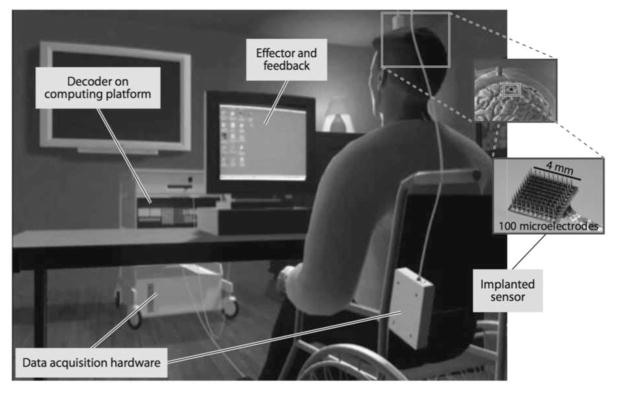Fig. 1.
Illustration of a closed-loop intracortical BCI setup. The user has an intracortical electrode (Utah array) inserted into the motor cortex acting as the sensor, which then sends real-time voltage signals to the external processing system, converting raw voltages into spikes. The decoder then maps the high-dimensional spike data to low-dimensional output that is fed to the effector as computer cursor control. The real-time cursor control is then provided as feedback to the user, who is then able to modulate further neural activity accordingly.

